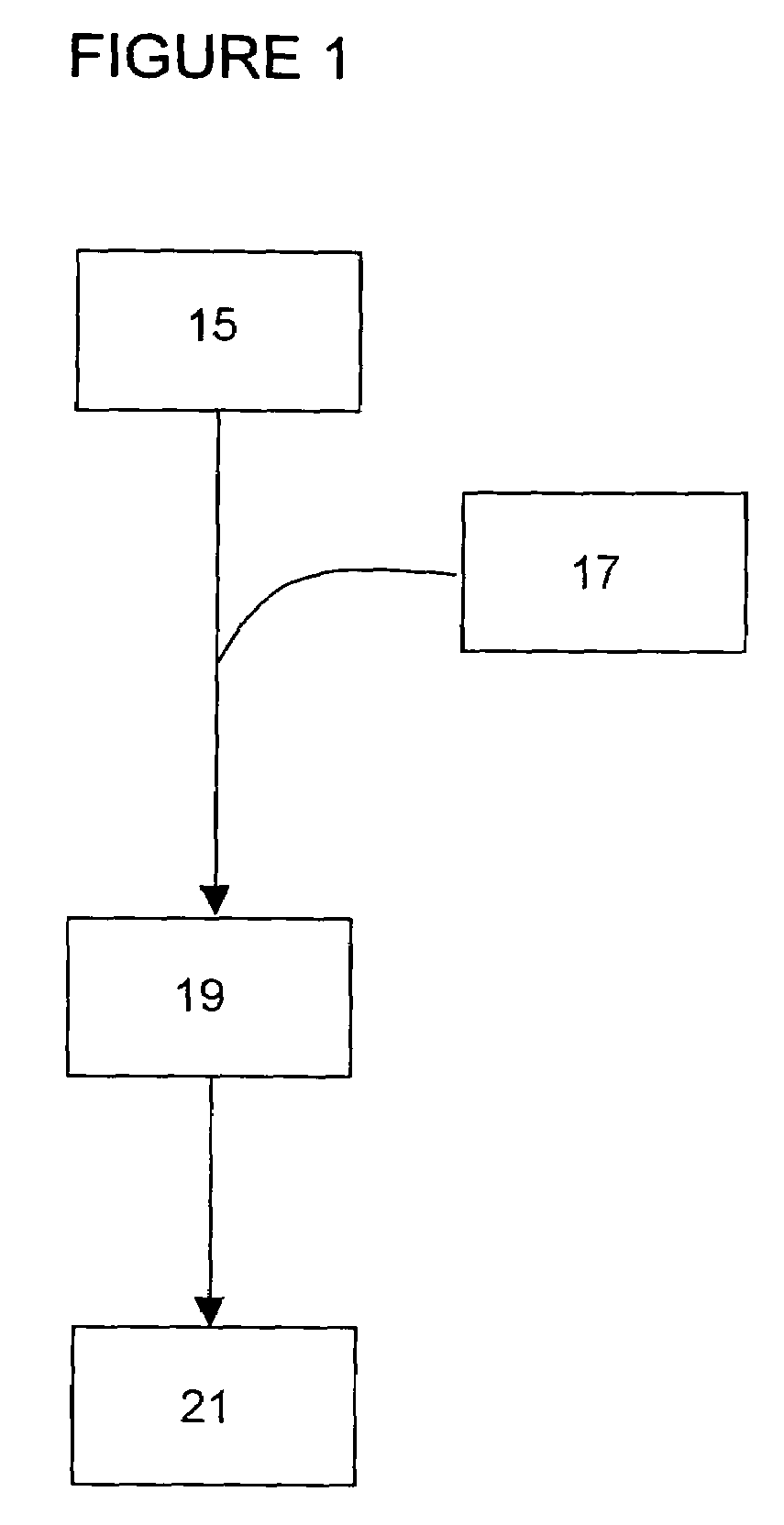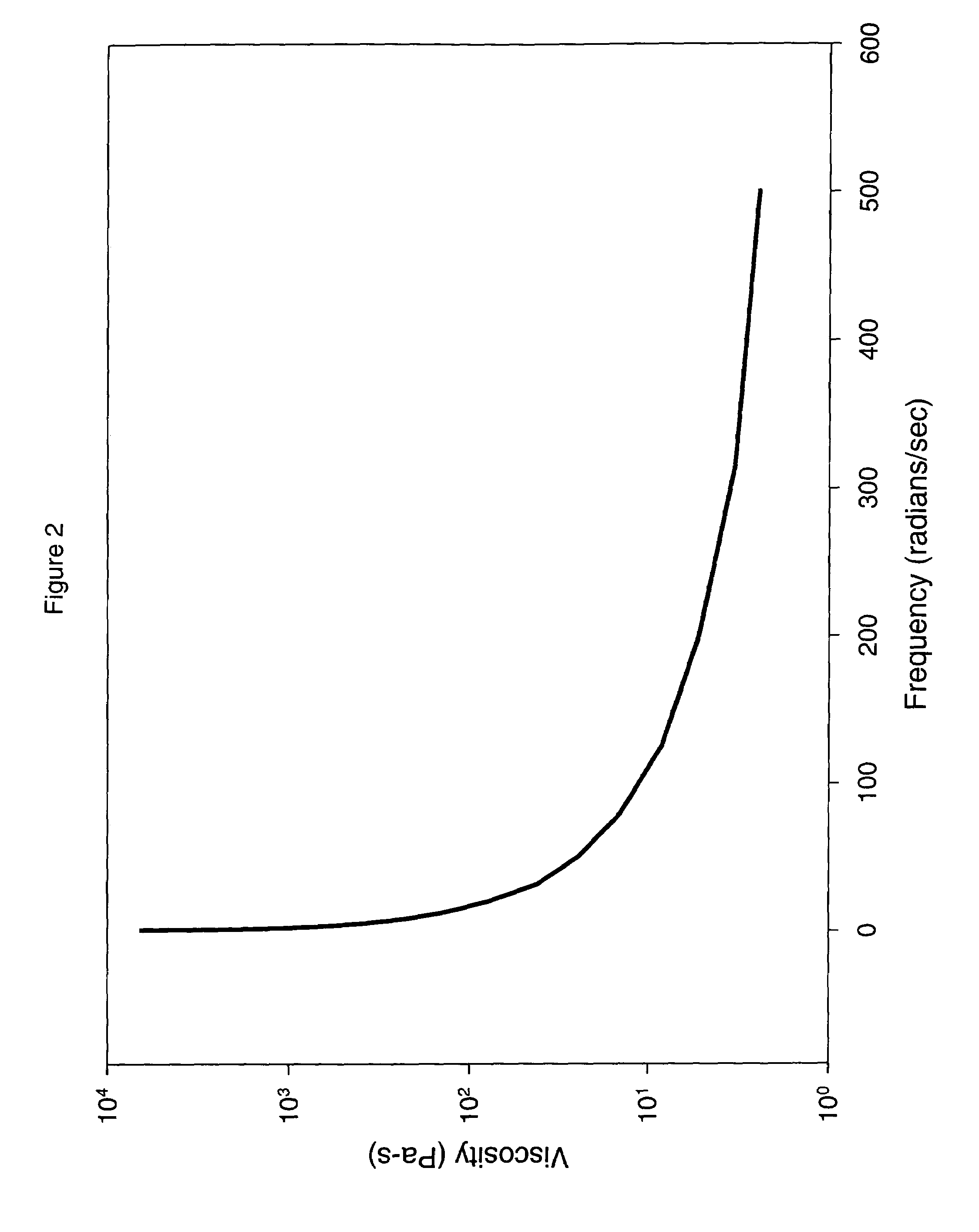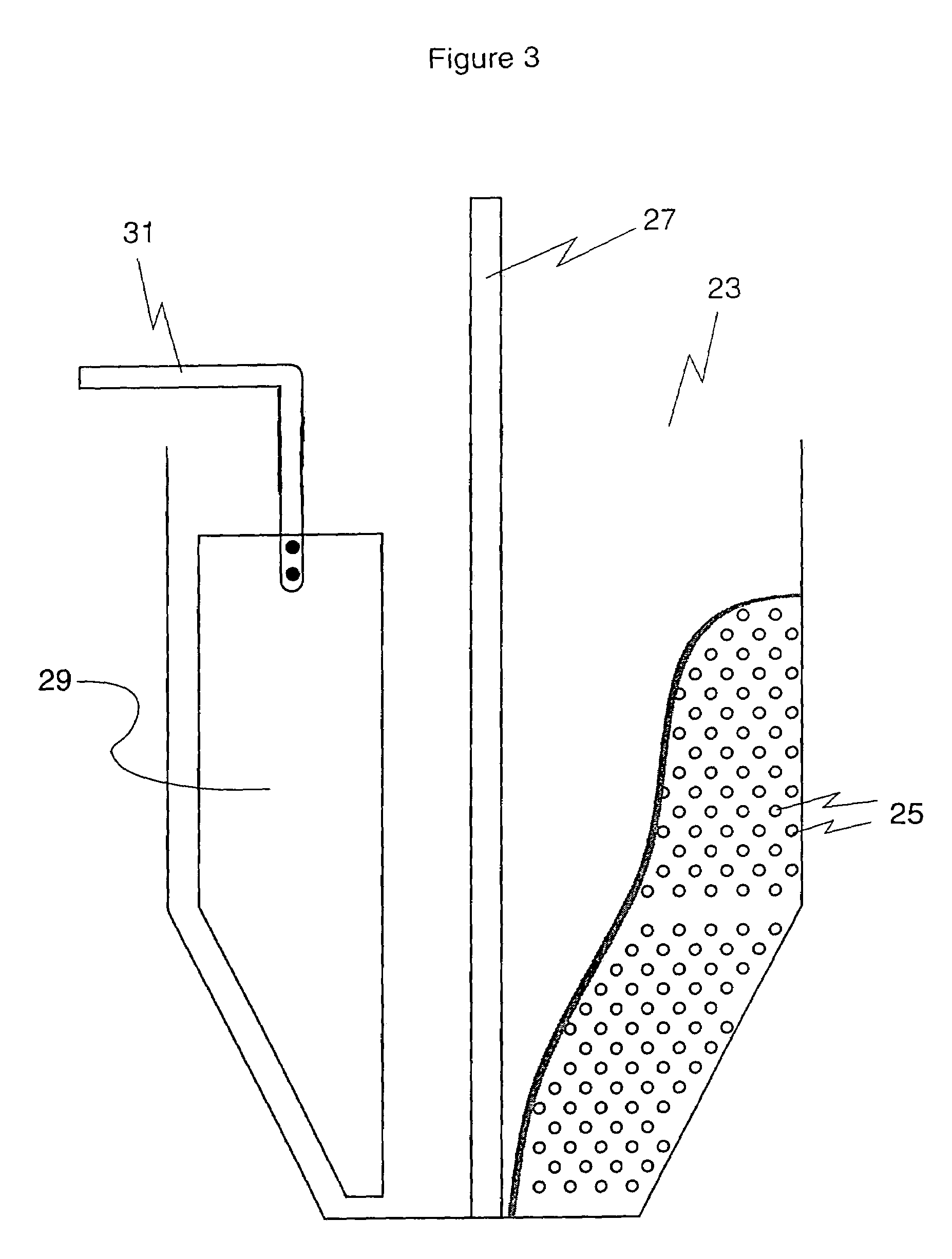Prilling method
- Summary
- Abstract
- Description
- Claims
- Application Information
AI Technical Summary
Benefits of technology
Problems solved by technology
Method used
Image
Examples
example one
Inventive Example One
Prilling with Rotating Bucket with a Stationary Blade
[0044]Six hundred grams of ASN was prepared by melting 228 g of ammonium nitrate and adding 372 g of finely ground ammonium sulfate heated to approximately 190° C. (1:1 molar ratio). Ammonium sulfate from AlliedSignal Inc. was used. No water was added to the mixture. The resulting mixture was mixed with heating until a temperature of 207° C. was reached and the melt slurry was fully mixed and fluid. The melt slurry was then poured manually into a rotating bucket prill head, 3.5 inch (89 mm) diameter by 6.0 inch (152 mm) high, equipped with four-2.5 mm diameter prill holes. The bucket was then spun around its central axis to a nominal speed of 500 rpm and a stationary agitator blade was inserted into the melt in the prill head (as illustrated in FIG. 3). After a few seconds of rotation, a stream of melt slurry flowed from the holes due to centrifugal force, and prills were formed. The prills fell about 35 verti...
example two
Inventive Example Two
Vertical Prilling with Stationary Prill Head Having Rotating Blades and Scrappers
[0045]Eighty pounds (36.3 kilograms) of ammonium sulfate nitrate was prepared by melting 30.4 pounds (13.8 kilograms) of ammonium nitrate and mixing in 49.6 pounds (22.5 kilograms) of finely ground (Tyler −40), heated ammonium sulfate. The AS was heated using a fluidized bed heater, set to 150° C. Ammonium sulfate from AlliedSignal Inc. was used. A small quantity of water (1.1 pounds; 500 grams) was added to help suppress fuming. The melt slurry was mixed and reacted for several minutes and heated to 181° C. An open top vertical prill head (as pictured in FIG. 4) of 6-inch (152 mm) inside diameter and 16.5-inch (419 mm) liquid depth was equipped with a prill plate of ten-2.5 mm diameter holes. The prill head was a jacketed vessel and had rotating blades to produce agitation. The prill head agitator was brought to a rotation speed of 200 rpm and the ASN melt slurry was pumped from th...
example three
Inventive Example Three
Prilling Using Smaller Prill Holes and Wiped-Plate Agitator
[0047]Using the same prill cup that was used in Comparative Example C, the agitator was reset to provide zero clearance between the bottom blades and the inside plane of the prill plate. The ASN was prepared as in Comparative Example C and transferred into the modified prill cup. With the wiped prill plate, the ASN melt slurry flowed out the prill holes under its own static pressure (approximately 5 in liquid depth), forming smooth streams. The application of nitrogen pressure up to about 2 psi was found to increase the flow rate. At pressures above 2 psi, the streams ceases to flow smoothly and atomization began, resulting in much smaller and irregular particles.
PUM
| Property | Measurement | Unit |
|---|---|---|
| Percent by mass | aaaaa | aaaaa |
| Reaction temperature | aaaaa | aaaaa |
| Reaction temperature | aaaaa | aaaaa |
Abstract
Description
Claims
Application Information
 Login to View More
Login to View More - R&D
- Intellectual Property
- Life Sciences
- Materials
- Tech Scout
- Unparalleled Data Quality
- Higher Quality Content
- 60% Fewer Hallucinations
Browse by: Latest US Patents, China's latest patents, Technical Efficacy Thesaurus, Application Domain, Technology Topic, Popular Technical Reports.
© 2025 PatSnap. All rights reserved.Legal|Privacy policy|Modern Slavery Act Transparency Statement|Sitemap|About US| Contact US: help@patsnap.com



